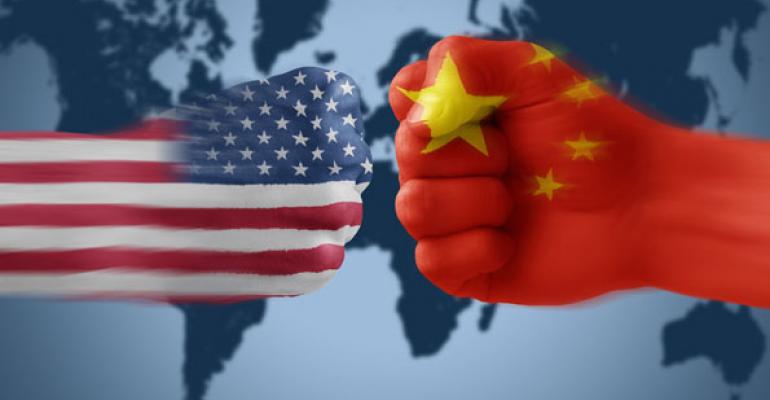The China-US showdown
May 2, 2018 | Expert Insights

Officials from China and the US are set to partake in high level discussions regarding trade ties. The meetings come just weeks after experts warned of a possible trade war between US and China.
Background
China is a major market for US agricultural products, machinery, and cars as well as other products. In 2016, it was the third largest market for US exports. According to the American Apparel & Footwear Association, more than 41% of clothing and 72% of footwear sold in the US are made in China. China's trade surplus with the United States widened in 2017 while total foreign trade volume maintained rapid growth.
Former chief executive of Hong Kong Tung Chee-hwa recently said that a trade war must be avoided. “In such a big relationship, there is bound to be disagreement, but rash action on either side will only create the environment for a very serious trade war, which is not good for any country. Patient discussion and negotiation, particularly considering the long-term prospects of the relationship, will be very important,” he said.
In recent weeks, Washington announced that Chinese imports would be hit with tariffs worth US$60. The trade sanctions triggered retaliation from China’s foreign ministry, which said that Beijing would “take all legal measures to protect our interest.” On March 23rd, 2018, China unveiled tariffs on $3 billion of US imports as a response to the US’ actions. In addition to these tariffs, it has been reported that China will take up legal action against the US at the World Trade Organization.
Analysis
Officials from the US and China are set to come together to have high levels talks in Beijing this week regarding trade ties. According to both, neither is willing to compromise by too much when it comes to demands made by either party.
Recently, US Commerce Secretary Wilbur Ross blamed “evil practices” for the record trade deficit between US and China. “President Trump is of the view that it’s now time for action. Our trade deficit is too big, too continuing, too chronic and too inspired by evil practices.”
President Donald Trump commented on the summit by taking to Twitter noting, “Delegation heading to China to begin talks on the Massive Trade Deficit that has been created with our Country. Very much like North Korea, this should have been fixed years ago, not now. Same with other countries and NAFTA...but it will all get done. Great Potential for USA!”
The New York Times, however, has reported that China will not be easily caving into US demands during these meetings. The news outlet noted that two of Trump’s demands will especially not be seriously considered by Chinese authorities. The report states, “Those include a mandatory $100 billion cut in America’s $375 billion annual trade deficit with China and curbs on Beijing’s $300 billion plan to bankroll the country’s industrial upgrade into advanced technologies like artificial intelligence, semiconductors, electric cars and commercial aircraft. The reason: Beijing feels its economy has become big enough and resilient enough to stand up to the United States.”
Counterpoint
This week, the United States delayed its decision on the steel tariffs announced earlier this year. Washington will postpone the 25% tariff on steel imports for key allies including the EU, Canada, and Mexico for another month. This could indicate that US is open to renegotiating some of the tariffs it had announced.
Assessment
Our assessment is that a trade war between China and the US would hit global economy. A recent analysis by Bloomberg notes that a full-fledged trade war could cost the global economy $470 billion. The countries are setting themselves up for battle so to speak and are finally addressing years of grievances from both sides. Ahead of these high-level discussions, markets remain concerned. In addition, these tariffs have other consequences as well. According to analysts, the tariffs imposed by the US would result in higher costs for consumers.








Comments